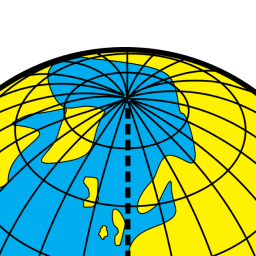North Pole
North Pole is where the polar bear live. The temperatures is in range from -50 to -13 °C. Within one year, the sun will stay on the sky for 6 months, and another 6 months will be night time. You can easily see the aurora light from January to March around this area.
The content of this article is excerpted from Wikipedia. It exist here as a placeholder for layout development purpose.
The North Pole, also known as the Geographic North Pole or Terrestrial North Pole, is (subject to the caveats explained below) defined as the point in the Northern Hemisphere where the Earth’s axis of rotation meets its surface. It should not be confused with the North Magnetic Pole.
The North Pole is the northernmost point on the Earth, lying diametrically opposite the South Pole. It defines geodetic latitude 90° North, as well as the direction of true north. At the North Pole all directions point south; all lines of longitude converge there, so its longitude can be defined as any degree value. Along tight latitude circles, counterclockwise is east and clockwise is west.
While the South Pole lies on a continental land mass, the North Pole is located in the middle of the Arctic Ocean amid waters that are almost permanently covered with constantly shifting sea ice. This makes it impractical to construct a permanent station at the North Pole (unlike the South Pole). However, the Soviet Union, and later Russia, constructed a number of manned drifting stations on a generally annual basis since 1937, some of which have passed over or very close to the Pole. Since 2002, the Russians have also annually established a base, Barneo, close to the Pole. This operates for a few weeks during early spring. Studies in the 2000s predicted that the North Pole may become seasonally ice-free because of Arctic ice shrinkage, with timescales varying from 2016 to the late 21st century or later.
The sea depth at the North Pole has been measured at 4,261 m (13,980 ft) by the Russian Mir submersible in 2007 and at 4,087 m (13,410 ft) by USS Nautilus in 1958. The nearest land is usually said to be Kaffeklubben Island, off the northern coast of Greenland about 700 km (430 mi) away, though some perhaps non-permanent gravel banks lie slightly closer. The nearest permanently inhabited place is Alert in the Qikiqtaaluk Region, Nunavut, Canada, which is located 817 km (508 mi) from the Pole.

author
